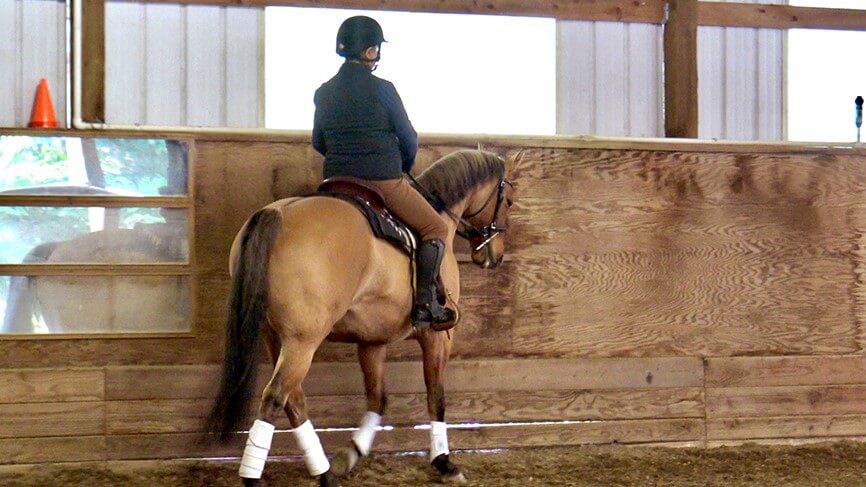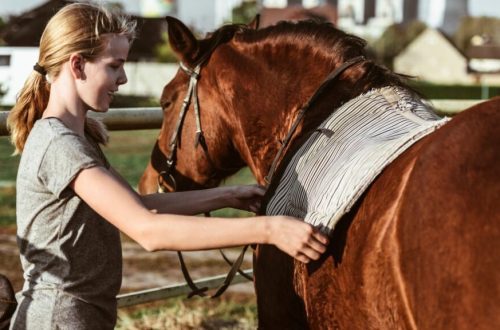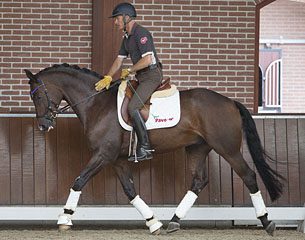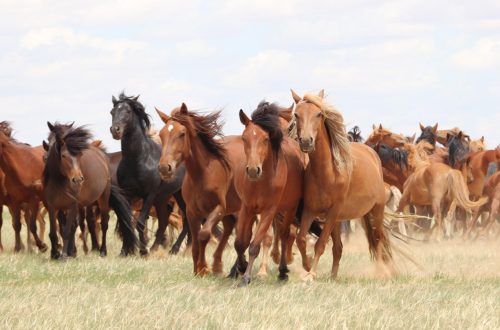
Work on bending with a restrained horse
Work on bending with a restrained horse
You can help your tight and stiff horse bend better by using what I call “benevolent antagonism.” Benevolent Antagonism is a training philosophy that allows you to customize your program to suit each horse.
The method involves you kindly and calmly doing the opposite of what your horse has chosen to do on his own. For example, if your horse likes to carry his head too high, then you work him “deep down”. If she likes to “cling her nose to the ground”, then you work her “above”. If your horse likes to go too fast, then you are working at a slow pace.
When it comes to lateral bending, it turns out that only a few horses are ambidexters (can easily bend both to the right and to the left). By using benevolent antagonism, you will actually make your horse’s soft side more “hard” and the hard side more “soft” and supple.
How to make the pinched side “softer”?
Riders tend to think that the hard side is the “bad” side because it becomes harder for them to bend the horse when that side is inside. But you need to think outside the box. The hard side is not a problem. Your horse is tight to the right because the muscles on the left side of his body are contracting and shortening. These contracted muscles limit how much the horse can stretch his left side and bend around your right leg.
The solution to this problem with the benevolent antagonism method is to stretch these shortened muscles on the left side by bending the horse hard as you ride to the right. During training, you will live in “right bend” until you feel the muscles on your left side stretch (you will know that these muscles are stretched when you notice that it becomes easier for you to bend your horse to the right).
So, let’s go to the right – this is a hard (enslaved, squeezed) side.
Gently stretch and stretch the muscles on the left side of your horse’s body and make sure your controls support this flexibility, the following will help you exercise (if your horse is very tight, do it at the walk)
1. Move around the big circle driving to the right.
2. Pick an arbitrary point along the arc of the circle and rotate by a 6 meter volt.
3. As you move up the volt, focus on bending. Shift your weight onto your right seat bone, keep your right foot on the girth, place your left foot behind the girth, bend your horse to the right by turning the “key in the lock” with your right wrist, and support your horse with your left hand.
4. Work on the circle until your horse’s body begins to follow the path of the arc.
5. Once the horse is flexed, continue to maintain the “6m” bend while moving to a 20m circle.
6. If your horse finds it difficult to keep the bend to the right, return to the 6-meter circle. The idea is to “think” about moving in a 20-meter circle, keeping the flexion as for a 6-meter volt, even if you won’t be able to do it yet.
7. Once you can do this while moving in a circle, try with the same bend (6-meter volt) to move down the long side of the arena. It will feel like you are doing shoulder in (front) and hip in (back) at the same time. Moving along the long wall, bend the horse to the right from nose to tail as if he is riding in an arc of a circle, the top of which touches the long wall of the arena. Make sure you bend the horse in front of the leg and behind the saddle.
How to make the soft side “harder”?
The flip side of this “hard to the right” problem is that your horse will be stretched or soft to the left. You might think that his “soft” side is the “good” side because it’s easier for the horse to bend to that side, but your horse’s “stretched” side needs help too.
On the extended side, your horse has no true bend from poll to tail. She usually bends her neck inward and places her inside hind leg inward from the trailing line. So the horse tries avoid bending the joints of the hind legs (connection) and not taking weight on the hindquarters. As a result, the inside leg weakens and the horse develops unevenly.
The solution to this problem in terms of benevolent antagonism is to ride without any flexion when the stretched side is on the inside. Keep your horse as level as you would on the long side of the arena, even when you are going through corners and moving in circles and circles. Imagine that her body is like a bus that cannot flex when cornering.
So let’s say your horse is stretched (soft, weak) on his left side. I can give you some Boards:
1. When moving in a circle to the left, do not bend the horse at all. Keep her body straight, like a bus.
2. To get an idea of straightness, stop at an arbitrary point along the long side of the arena. Align the horse’s body so that it is parallel to the wall from poll to tail.
3. Move either without bending (the horse’s chin is aligned with the center of his chest) or in counter-bending (-1). In counter-bending, her head will be 2-3 cm to the right of the “neutral” position (without bending).
4. Drive through corners and circles without bending the horse’s body or bending at the poll. If you work in this position, your horse’s left hind leg will go under his body and become stronger over time.
NoteA: These physical therapy exercises are for training purposes only and are not used during competition.
If you use the philosophy of benevolent antagonism, you will find that you rarely get stuck on any issues.
Jane Savoy (source); translation by Valeria Smirnova.





